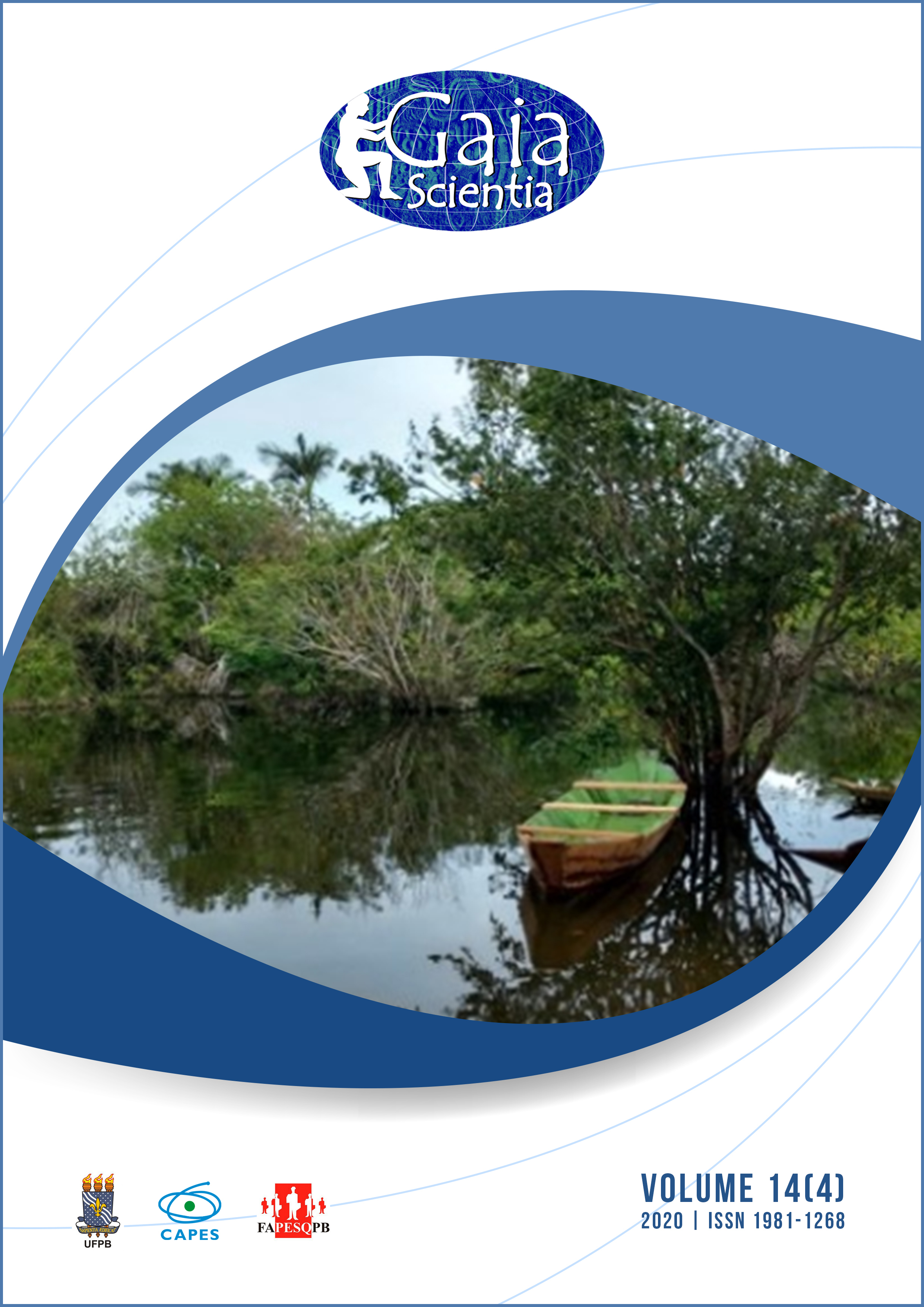Physiographic division of the Buranhém river basin as a subsidy for water resources planning and management
DOI:
https://doi.org/10.22478/ufpb.1981-1268.2020v14n4.51802Abstract
The physical characterization of any watershed is a tool for the management of these territories. This study aimed to evaluate these characteristics for the hydrographic basin of the Buranhém river, in south of Bahia, considering them as factors of environmental impact in order to compartmentalize the basin. The Digital Elevation Model (DEM) and the soil cover provided by the Forestry Forum of the Extreme South of Bahia were processed using the QGIS 2.18 software. Hydrometeorological, flow and precipitation data available on the national network (Hidroweb / ANA) were also analyzed. The data were evaluated by sub-basin, assigning weights according to the effect of surface water transmissibility and defluvium concentration, described in the literature. It was observed that elongated basins, with low vegetation cover and accentuated relief may show a tendency to flood due to the favored surface runoff, which results in risks of erosion, loss of soil, silting, compromised water quality and low availability of water to the surrounding area. The analysis resulted in the compartmentalization into four contributing sub-basins according to the potential impact on water resources, being a tool to support the planning of the basin as a heterogeneous territory with different natural and man-made tendencies.










